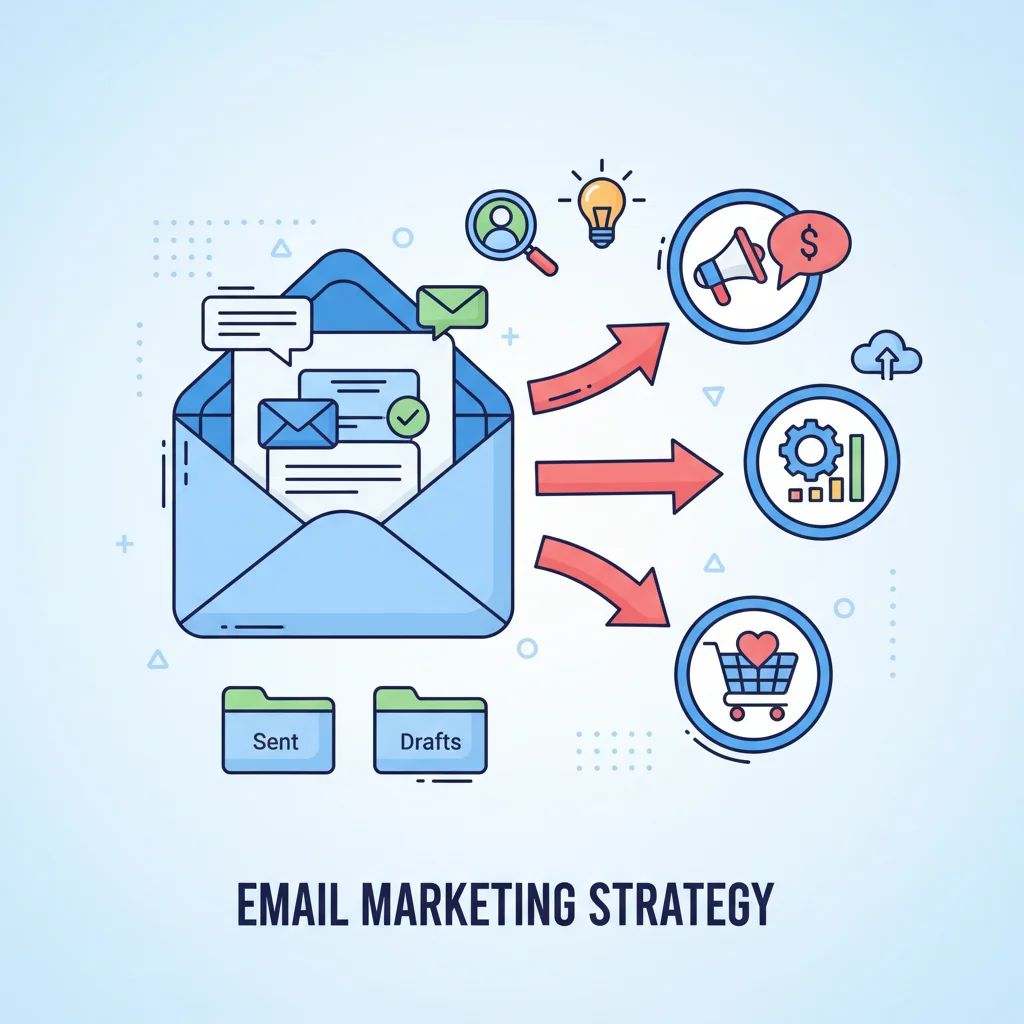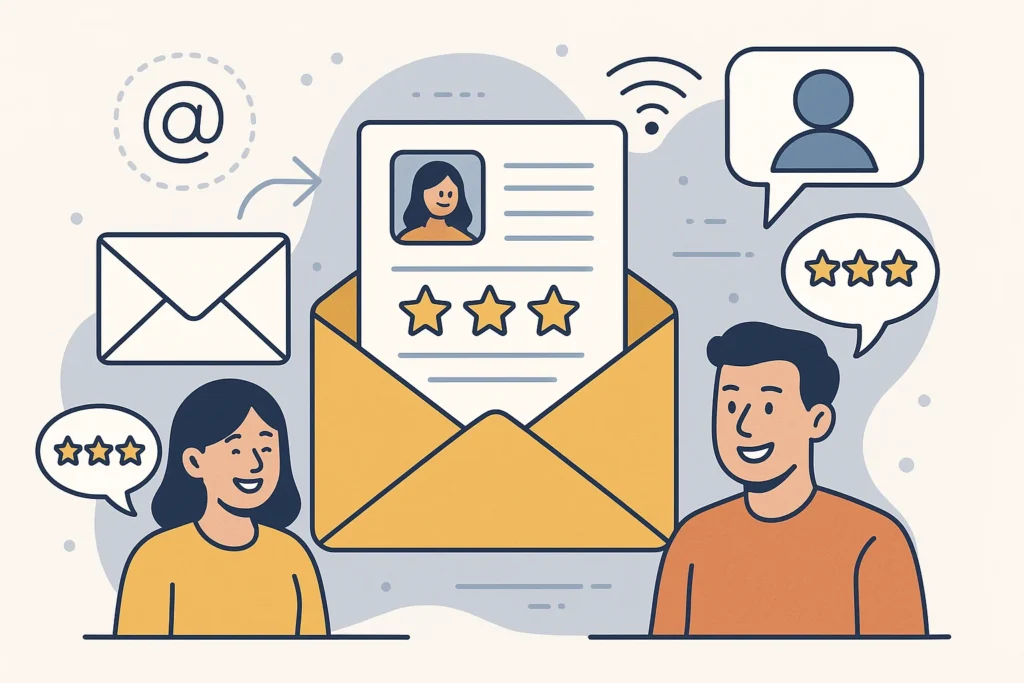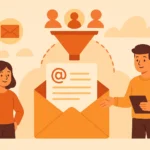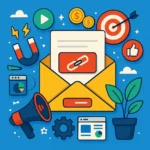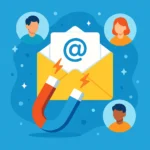Now Reading: Email Marketing for Lead Nurturing: Turn Prospects Into Buyers
-
01
Email Marketing for Lead Nurturing: Turn Prospects Into Buyers
Email Marketing for Lead Nurturing: Turn Prospects Into Buyers
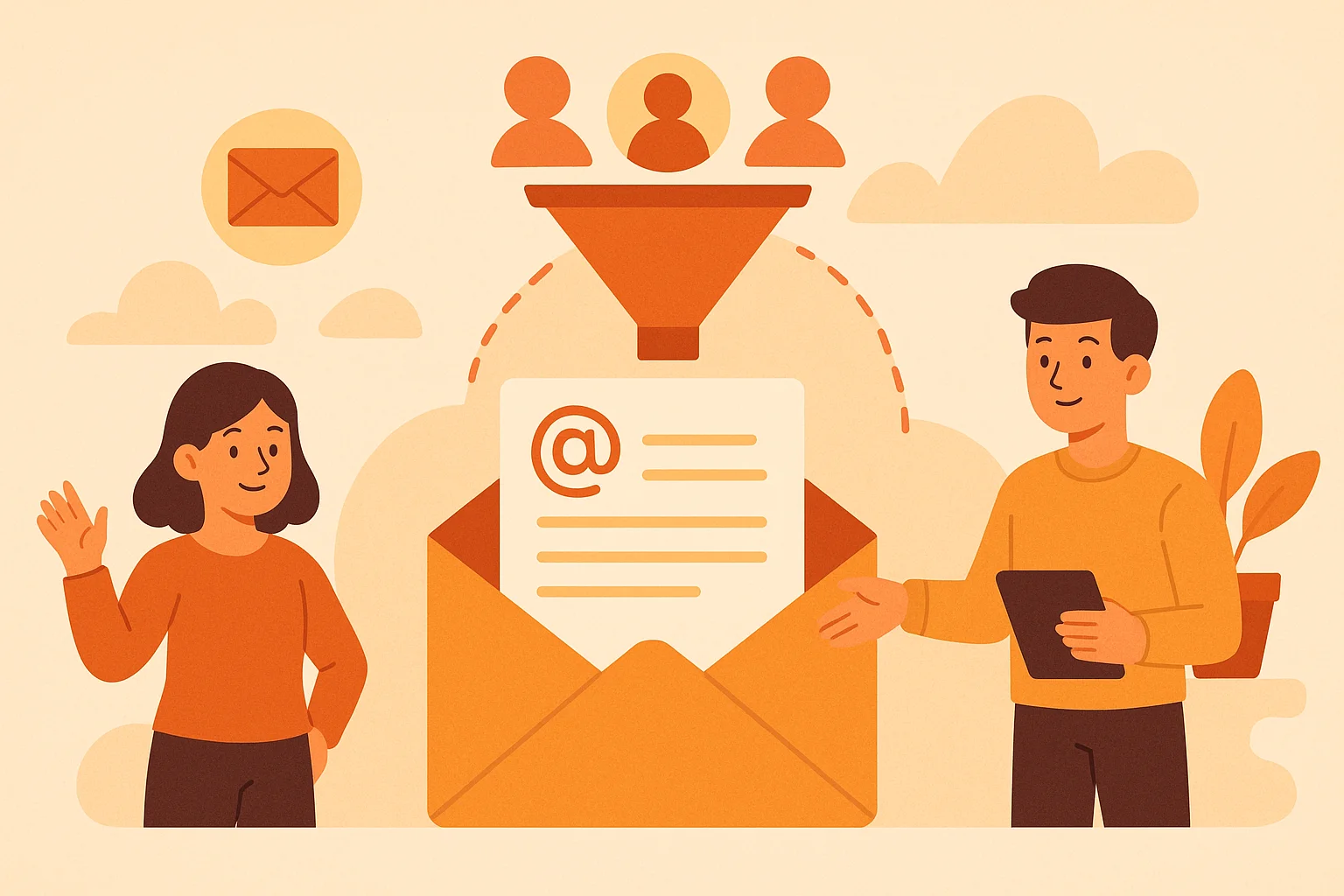
What’s the difference between businesses that convert 5% of their leads and those that convert 25%? It’s not better products. It’s not lower prices. It’s not even more aggressive sales tactics. The secret weapon is something much simpler that most companies completely overlook: strategic email marketing for lead nurturing. And the crazy thing? It takes less time than you might think to implement.
Key Takeaways
How to use email marketing to nurture leads:
- Segment your email list based on behavior, interests, and where leads are in the buyer’s journey
- Create personalized content that addresses specific pain points at each stage
- Establish consistent sending schedules with 2-3 emails per week for new leads
- Use automation to deliver timely, relevant messages based on lead actions
- Include clear CTAs that guide prospects to the next step in their journey
- Track metrics like open rates, click-throughs, and conversions to optimize performance
Understanding Email Marketing For Lead Nurturing
Email marketing for lead nurturing isn’t just sending random promotional emails hoping something sticks. It’s a strategic approach to building relationships with potential customers who aren’t quite ready to buy yet. Think of it as dating before marriage – you’re getting to know each other before making a commitment.
What exactly is lead nurturing?
Lead nurturing is the process of developing relationships with buyers at every stage of the sales funnel. It focuses on listening to prospects’ needs and providing the information and answers they need to build trust and guide them toward making a purchase.
When done through email, it becomes an incredibly powerful tool because:
- It’s direct and personal
- It’s measurable and trackable
- It can be automated while still feeling personalized
- It delivers an average ROI of $36 for every $1 spent
The goal isn’t to make an immediate sale (though that’s nice when it happens!). Instead, it’s about keeping leads interested and gradually persuading them to make a purchase when they’re ready.
Mapping Your Lead Nurturing Email Strategy
Before writing a single email, you need to understand your sales funnel and how leads move through it. This helps you deliver the right content at the right time.
Identify your funnel stages
A typical sales funnel includes these stages:
- Awareness: Leads recognize they have a problem or need
- Consideration: Leads are actively researching solutions
- Decision: Leads are ready to choose a specific solution
- Retention: Customers have purchased and need ongoing support
- Advocacy: Customers become brand advocates
Each stage requires different types of emails with different goals. For example, awareness-stage leads need educational content, while decision-stage leads need comparison guides and testimonials.
Create buyer personas
Effective lead nurturing requires understanding who your leads are. Develop detailed buyer personas that include:
- Demographics (age, location, job title)
- Goals and challenges
- Preferred communication channels
- Decision-making factors
- Objections and concerns
This information helps you craft messages that resonate with your audience on a personal level. The more specific your personas, the more effective your nurturing emails will be.
Useful Articles:
Crafting Effective Lead Nurturing Emails
Now let’s get into the nitty-gritty of creating emails that convert. The structure and content of your emails matter tremendously.
Subject lines that get opened
Your subject line is the gatekeeper to your email content. No matter how amazing your email is, it’s worthless if no one opens it. Some effective approaches:
- Ask questions: “Are you making these SEO mistakes?”
- Create urgency: “Last chance to access exclusive insights!”
- Spark curiosity: “The surprising truth about conversion rates”
- Offer value: “5 proven strategies to increase your ROI”
- Use personalization: “John, here’s how to simplify your marketing strategy”
Keep subject lines under 40 characters to prevent truncation on mobile devices. And always make sure they accurately reflect what’s inside – clickbait damages trust.
Email body best practices
The body of your email should be concise, engaging, and focused on a single topic. Here’s what works:
- Keep it short: Aim for 60-125 words for maximum impact
- Use conversational language: Write like you’re talking to a friend
- Break text into chunks: Use short paragraphs, bullets, and subheadings
- Focus on benefits: Explain how your content helps solve problems
- Include one clear CTA: Give readers a single, obvious next step
Remember that people skim emails, so make your content scannable and put the most important information first.
Types Of Lead Nurturing Emails
Different situations call for different types of nurturing emails. Here are the essential types to include in your strategy:
Welcome emails
Your welcome email sets the tone for your entire relationship. It should:
- Thank the lead for subscribing
- Set expectations for future communications
- Provide immediate value
- Include a simple next step
Magic Mind does this well with their welcome email that introduces their brand as “where magic meets science” while immediately offering 15% off the first order. This gives new subscribers a reason to convert right away.
Educational content emails
Educational emails establish your expertise and help leads understand their problems better. These should:
- Address specific pain points
- Provide actionable advice
- Link to in-depth resources on your site
- Position your brand as a trusted advisor
Busuu’s educational emails are excellent examples – they provide clear guidance without overwhelming the reader and include a straightforward CTA directing users to the next step in their journey.
Product or feature announcement emails
When you have something new to share, announcement emails keep your leads informed and engaged. Effective announcement emails:
- Create anticipation
- Clearly communicate benefits (not just features)
- Include visuals of the new product/feature
- Offer early or exclusive access
Huel nails this by showing a blurred image of an upcoming product to create curiosity without revealing too much, along with clear communication about what to expect and when.
Personalized recommendation emails
After leads have engaged with your content or browsed your products, recommendation emails can guide them toward relevant offerings. These emails should:
- Acknowledge previous interactions
- Suggest products/content based on behavior
- Explain why the recommendations are relevant
- Include social proof when possible
Cole Haan does this well by acknowledging the customer’s taste first, then providing thoughtfully curated product suggestions that feel personalized rather than random.
Limited-time offer emails
Creating urgency with limited-time offers can motivate leads to take action. These emails should:
- Clearly state the time limitation
- Explain the value of the offer
- Use design elements like countdown timers
- Include a prominent CTA
Devialet’s approach is direct and effective, with a well-defined time window to create urgency and transparency about their refurbished products.
Segmentation: The Secret To Effective Lead Nurturing
One-size-fits-all emails don’t work for lead nurturing. Segmentation is crucial for delivering relevant content that moves leads through your funnel.
Behavioral segmentation
Segment leads based on how they’ve interacted with your brand:
- Website behavior: Pages visited, time spent, downloads
- Email engagement: Opens, clicks, replies
- Purchase history: Products bought, average order value
- Content consumption: Blog posts read, videos watched
For example, if someone repeatedly visits your pricing page but doesn’t convert, they might need a special offer or case study to push them over the edge.
Demographic segmentation
Different demographics often have different needs and preferences:
- Job title/role: Decision-makers vs. influencers
- Industry: Specific challenges and solutions
- Company size: Enterprise vs. small business concerns
- Geographic location: Regional issues and opportunities
A CEO might need ROI-focused content, while a manager might need implementation details. Tailor your messaging accordingly.
Lifecycle stage segmentation
Where leads are in your funnel determines what content they need:
- New leads: Introductory content and brand information
- Engaged leads: More detailed solutions and comparisons
- Sales-ready leads: Case studies, testimonials, and offers
- Customers: Onboarding, upsells, and retention content
This approach ensures you’re not sending decision-stage content to awareness-stage leads or vice versa.
Useful Articles:
Automation And Timing In Lead Nurturing
Strategic timing and automation make your lead nurturing more effective and efficient.
Setting up automated workflows
Email automation allows you to deliver the right message at the right time based on lead behavior. Common automation triggers include:
- Form submissions: Send follow-up content after downloads
- Email engagement: Send related content after clicks
- Website visits: Trigger emails based on page views
- Purchase activity: Send cross-sell or upsell recommendations
- Inactivity: Re-engage dormant leads
For example, if someone downloads your ebook, an automation might send a follow-up email three days later with additional resources on the same topic.
Optimal timing and frequency
Finding the right cadence for your emails is crucial:
- For new leads: 2-3 emails per week is often effective
- For engaged leads: 1-2 emails per week maintains interest
- For sales-ready leads: More frequent, targeted communications
- For customers: Regular but less frequent touches
The best times to send vary by industry and audience, so test different days and times to find what works for your specific leads.
Drip campaigns vs. triggered emails
Both approaches have their place in lead nurturing:
- Drip campaigns: Pre-planned sequences sent at predetermined intervals
- Triggered emails: Sent in response to specific lead actions
A good nurturing strategy combines both – drip campaigns for consistent touchpoints and triggered emails for timely, relevant responses to lead behavior.
Personalization Techniques For Lead Nurturing
Personalization goes way beyond using a lead’s name. Here’s how to make your emails feel tailor-made:
Dynamic content
Dynamic content changes based on recipient data:
- Industry-specific examples: Show case studies from the lead’s industry
- Role-based messaging: Highlight benefits relevant to their position
- Location-based offers: Include regional events or promotions
- Behavior-based recommendations: “Because you viewed X, you might like Y”
This approach makes every email feel custom-created for each recipient, even when sent to thousands.
Personalized recommendations
Use data to suggest relevant products, services, or content:
- Based on past purchases: “Complete your set with these items”
- Based on browsing history: “You might be interested in these articles”
- Based on similar customers: “Customers like you also bought”
- Based on abandoned actions: “Ready to finish what you started?”
Ever Eden’s welcome email does this well by clearly highlighting their brand’s purpose of safe, organic self-care for kids, making it immediately relevant to their target audience of parents.
Behavioral triggers
Respond to specific lead actions with targeted content:
- After downloading content: Send related resources
- After viewing pricing: Send ROI calculators or case studies
- After attending a webinar: Send follow-up materials
- After cart abandonment: Send reminders or incentives
These timely responses feel incredibly personalized because they directly address what the lead is currently interested in.
Writing High-Converting Lead Nurturing Emails
The way you write your emails significantly impacts their effectiveness. Here are some proven approaches:
Conversational tone
Write like you’re talking to a friend, not delivering a corporate presentation:
- Use contractions (you’re, we’ll, don’t)
- Ask questions to engage the reader
- Share occasional personal anecdotes
- Avoid jargon and buzzwords
This approach builds connection and makes your emails more enjoyable to read.
Storytelling elements
Stories capture attention and make your points memorable:
- Share customer success stories
- Use before-and-after scenarios
- Include relevant personal experiences
- Create metaphors that simplify complex concepts
Nintendo does this well in their birthday emails by combining celebration with value – sending birthday wishes along with free coins and an exclusive discount, creating a mini-story around the recipient’s special day.
Clear calls-to-action
Every nurturing email should have a clear next step:
- Use action-oriented language (“Start your free trial” vs. “Free trial”)
- Make CTAs visually stand out with buttons
- Place primary CTAs above the fold
- Include just one main CTA per email
Your CTA should be the logical next step based on where the lead is in their journey – not always “Buy now.”
Useful Articles:
Measuring Lead Nurturing Email Success
To improve your lead nurturing, you need to track the right metrics:
Key performance indicators
Monitor these essential metrics:
- Open rate: Are your subject lines working?
- Click-through rate: Is your content compelling?
- Conversion rate: Are leads taking desired actions?
- Unsubscribe rate: Is your content relevant? (Aim for under 5%)
- Time to conversion: How quickly are leads moving through your funnel?
These metrics help you identify what’s working and what needs improvement.
A/B testing strategies
Continuously optimize your emails through testing:
- Subject lines: Test length, personalization, questions vs. statements
- Send times: Test different days and times
- Email length: Test short vs. long-form content
- CTA placement: Test above the fold vs. end of email
- Design elements: Test plain text vs. HTML, images vs. no images
Only test one element at a time to clearly identify what impacts performance.
Continuous optimization
Use your data to constantly refine your approach:
- Review metrics after each campaign
- Identify top-performing emails and analyze why they worked
- Apply learnings to future campaigns
- Regularly update segments based on new behavior
- Refresh content to keep it relevant and engaging
The most successful lead nurturing programs are those that evolve based on performance data.
Technical Aspects Of Email Marketing For Lead Nurturing
The technical foundation of your email marketing affects deliverability and effectiveness:
Choosing the right email platform
Select an email service provider that supports your nurturing needs:
- Automation capabilities: Complex workflows and triggers
- Segmentation options: Detailed targeting criteria
- A/B testing tools: Easy testing and reporting
- Integration with your CRM: Seamless data flow
- Analytics and reporting: Comprehensive performance data
Popular options include Mailchimp, HubSpot, ActiveCampaign, and Klaviyo, each with different strengths.
Mobile optimization
With over 60% of emails opened on mobile devices, optimization is crucial:
- Use responsive email templates
- Keep subject lines under 40 characters
- Use large, tappable buttons for CTAs
- Keep copy concise and scannable
- Test emails on multiple devices before sending
A poor mobile experience can derail even the best nurturing strategy.
Deliverability best practices
Ensure your carefully crafted emails actually reach inboxes:
- Maintain a clean email list by removing inactive subscribers
- Use double opt-in to confirm subscription interest
- Avoid spam trigger words in subject lines
- Authenticate your domain with SPF, DKIM, and DMARC
- Monitor your sender reputation
Even perfect emails are worthless if they land in spam folders.
Integrating Email With Your Overall Lead Nurturing Strategy
Email works best as part of a coordinated multi-channel approach:
Coordinating with other channels
Create a cohesive experience across touchpoints:
- Social media: Reinforce email messages on social platforms
- Retargeting ads: Show ads related to email content
- Website personalization: Customize site experience based on email engagement
- Sales outreach: Coordinate timing of sales calls with email activity
This multi-channel approach creates multiple touchpoints that reinforce your message.
CRM integration
Connect your email platform with your CRM for a complete view of lead activity:
- Sync contact data between systems
- Track email engagement in your CRM
- Trigger sales notifications based on email behavior
- Use CRM data to inform email segmentation
- Create holistic lead scoring that includes email engagement
This integration ensures your sales team has visibility into marketing interactions.
Content alignment
Ensure all your content works together to move leads through the funnel:
- Create content for each stage of the buyer’s journey
- Repurpose content across channels (blog to email to social)
- Maintain consistent messaging and branding
- Use email to promote your best-performing content
- Create content sequences that build on previous knowledge
This strategic approach ensures leads receive the right information at the right time, regardless of channel.
Email marketing for lead nurturing isn’t just about sending emails – it’s about building relationships that convert prospects into customers. By segmenting your audience, personalizing your approach, and delivering valuable content at the right time, you can guide leads through their buying journey and significantly increase your conversion rates. Start implementing these strategies today, and watch your leads transform from cold contacts to enthusiastic customers.


